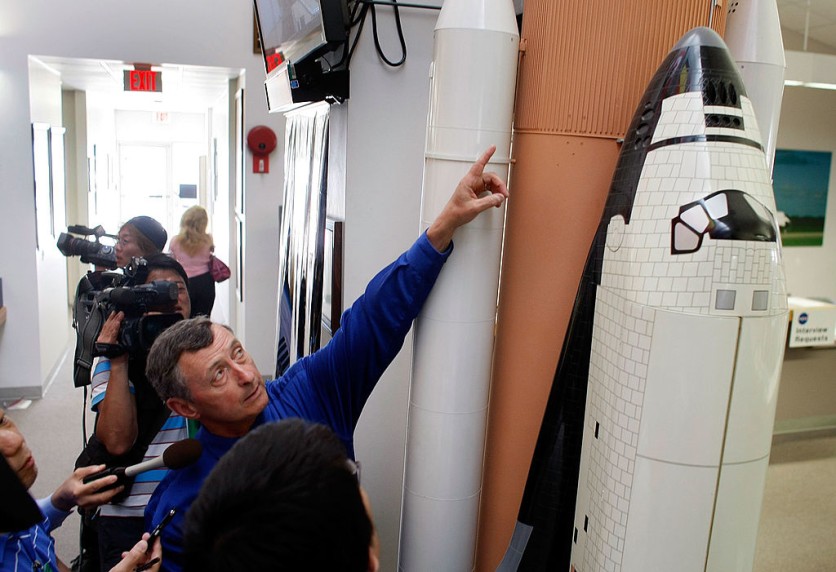
NASA announced on Aug. 27 that it would delay the launch of a satellite this September because of the shortages of liquid oxygen or LOX. These shortages are said to be related to the ongoing pandemic.
With the number of COVID-19 cases still increasing, there is a possibility that more launch delays will happen.
NASA Delays Launch Due to Lack of Liquid Oxygen
The demand for oxygen increase as the Delta variant spreads. In a lot of cities, it pushed hospitalization and ICU admittance rates back to where they began last year, during the peak of the pandemic.
However, oxygen is not just used in ventilators. The space industry also uses liquid oxygen as an oxidizer in rocket propellants, and it is often combined with other gases like liquid hydrogen. This is why when a rocket is launched, and there is so much steam. It is because hydrogen reacts with oxygen to form water.
The United Launch Alliance, a joint venture between Lockheed Martin and Boeing, and NASA, both said that the launch date for SpaceX's Landsat 9 satellite will now happen in Sep. 23 instead of the original plan of early September.
The United Launch Alliance is not the only launch company that is affected by the liquid oxygen shortage, accoridng to TechCrunch.
SpaceX President Gwynne Shotwell said during a panel at the Space Symposium last week that they are going to be affected by the lack of liquid oxygen this year, and it may delay several launch dates.
Shotwell added that they want to make sure that the hospitals will have all of the oxygen they need for ventilators, but if there is any liquid oxygen to space, they will be using it and will push through with the launch dates.
SpaceX's founder and CEO, Elon Musk, revealed on his personal Twitter account that the liquid oxygen shortage is a risk, but it is not considered a limiting factor in launching satellites, according to Bloomberg.
The space agency's projects and launch dates have been delayed several times this year. In April, NASA's Ingenuity was delayed due to the issues that it had during the test flight.
NASA is also currently reevaluating its Moon Mission for 2024 due to the issues with the spacesuits.
Impact on Supply Chain
Beyond the actual supply of liquid oxygen, the gas shortage currently experienced in the United States also stems from the widespread shipping delays as COVID-19 related disruptions continue to affect the supply chain.
Tory Bruno, the CEO of The United Launch Alliance, said that one of their contractors who delivers all of the nitrogen to the Vandenberg Space Force Base in California was recently asked to assist with liquid oxygen delivery in Florida, delaying the delivery to Vandeberg Base.
The space industry is not the only one that is feeling the effects of the liquid oxygen shortage, according to The Los Angeles Times.
Just before NASA announced the launch delay, officials from Orlando, Florida, sent out a notice asking residents to conserve water, as liquid oxygen is used to disinfect and sterilize the city's water supply.
Orlando Mayor Buddy Dyer said on Facebook that the demand for liquid oxygen is very high because it is currently used to save lives. Due to this, the supply of liquid oxygen given to Orlando is limited. The water quality may be affected if they do not reduce the amount of water they need to treat.
As of May 2020, the Center for Global Development called COVID-19 a wake-up call that industries must make sure that there is enough oxygen supply to hospitals.
Related Article: Blue Origin Lawsuit Against NASA's Moon Mission Delays Artemis Moon Mission with SpaceX
This article is owned by Tech Times
Written by Sophie Webster




![Most Useful Google Chrome Keyboard Shortcuts You Need to Know to Improve Your Browsing Experience [2024]](https://d.techtimes.com/en/full/449047/most-useful-google-chrome-keyboard-shortcuts-you-need-know-improve-your-browsing-experience-2024.jpg?w=184&h=103&f=476d29fd60df70a67f6679f99a2ca6d0)